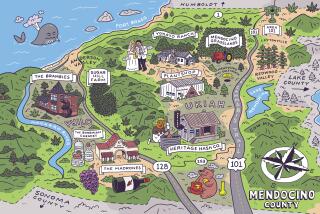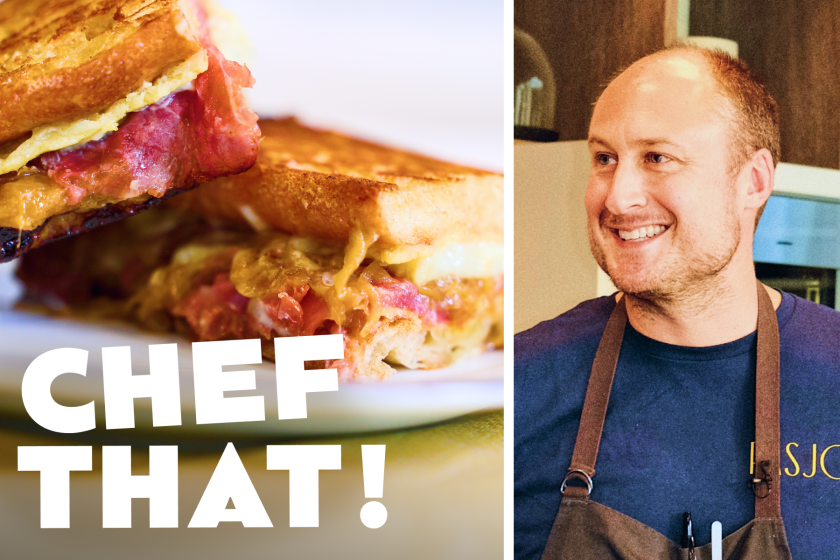Bonny Doon’s Randall Grahm has a crazy, ambitious new project
Randall Grahm, the eccentric force behind Bonny Doon Vineyard in the Santa Cruz Mountains, has a crazy, ambitious dream -- to discover a New World grand cru. And he’s turning to Indiegogo to fund him the $350,000 he figures he’ll need to do it. Four days into the campaign, he had already funded 11% of the project.
He’s already got the site, his 400-acre estate Popelouchum, just outside San Juan Bautista in the northern Central Coast. “Popelouchum” (Poh-puh-lou-shoom) is the Native American Mutsun people’s name for their historical settlement, near San Juan Bautista between the Gabilan Mountains and Flint Hills. The word can be translated as “village” and also as “paradise.”
“I’m obsessed with wines of place,” Grahm said. “These are the only wines that matter to me. The great wines have had hundreds of years of iteration and observation to achieve real congruence. And I thought to myself, how am I ever going to do anything like that in a very short lifetime -- not even a full lifetime at this point. It’s the existential problem that we don’t live long enough to do all the things we want to do.”
But even though it may be hard -- maybe impossible -- to achieve, he said he feels it’s still worth trying. And what exactly does he have in mind? He’s making two bets.
Bet No. 1: There may be a great intelligence or complexity or elegance that reposes in a very large population of distinct varieties of grapes. So he’s going to plant 10,000 vines all from the same family or same tribe, but each genetically diverse.
Before that happens, he’s going to discover which of many different grape varietals seem to be best suited to the site. He expects that to take five or six years.
Once he’s fixed on one grape varietal, he’s going to breed vines the old-fashioned way by selecting male and female plants and creating a cross. The idea is to consider the grapevines as a suite. “None of the offspring may be as brilliant as either parent, but if you consider them as a totality,” Grahm explained, “there might be a rare degree of complexity and nuance in sheer virtue of the very large population of which they’re composed.”
Bet No. 2: With enough time and observation, someone (probably not me, Grahm said), might have the wit to discern in this very large population individual vines that are uniquely well suited to the site or have special flavor characteristics, resistance to disease or tolerance to drought that would make the varieties of the future. His hope is to breed grape varietals that would be particularly suited to our changing environment and global climate change.
He’s been thinking about this for a while. As far back as 2010, he hired French soil scientists Claude Bourgignon and Lydia Gabucci-Bourgignon to undertake a thorough study of the property’s soils. “These guys are the geologists to the stars,” Grahm said. “Their work is basically trying to advise different vineyardists how they can optimally express their unique terroir.” They have identified micro-sites within Popelouchum and advised on which rootstocks and which varieties to plant where, he said.
The multi-population vineyards will encompass only a quarter of the estate, and Grahm is also planting more conventional grapes as well. But even those, he’ll grow in an unconventional matter. “Principally, by dry-farming -- state of the art in 1880, but very rare these days,” je said. “What we’re trying to do is model a kind of sustainability for a very challenged planet.”
The crowdfunding campaign runs for 22 more days (as of July 28). Contributors from levels starting at $5 and going up to $5,000 can earn rewards including limited-edition artwork and books signed by Grahm, the opportunity to name a new grape variety, a picnic on the estate or, at the highest level, dinner for 10 at the estate or any location of their choosing within California.
Follow @sirenevirbila for more on food and wine
More to Read
Eat your way across L.A.
Get our weekly Tasting Notes newsletter for reviews, news and more.
You may occasionally receive promotional content from the Los Angeles Times.










